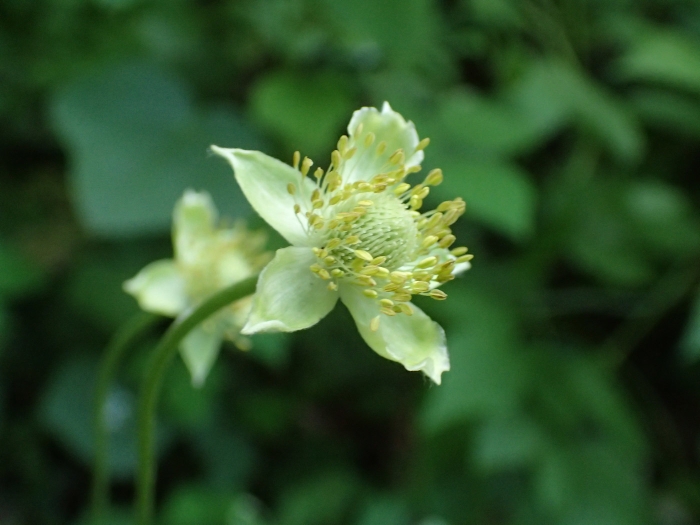Tall Thimbleweed
(Anemone virginiana)
Tall Thimbleweed (Anemone virginiana)
/
/

Evan M. Raskin
CC BY 4.0
Image By:
Evan M. Raskin
Recorded By:
Copyright:
CC BY 4.0
Copyright Notice:
Photo by: Evan M. Raskin | License Type: CC BY 4.0 | License URL: http://creativecommons.org/licenses/by/4.0/ | Rights Holder: Evan M. Raskin | Publisher: iNaturalist | Date Created: 2020-07-07T19:36:02-07:00 |




















































Estimated Native Range
Summary
Anemone virginiana, commonly known as Tall Thimbleweed, is a perennial herb in the Ranunculaceae family. It exhibits an upright growth habit, reaching 30–80 centimeters (12–31 inches) in height. Tall Thimbleweed is native to open woodlands and prairies of eastern North America, from Maine to Minnesota and south to Georgia and Louisiana. It flourishes in dry, well-drained soils and is often found in disturbed areas, indicating its adaptability to various conditions. The plant features deeply cut leaves that are whorled halfway up the stem, adding texture to the garden. From May to July, it produces white or greenish-white flowers that are modest in size but add a delicate charm to its surroundings. Following flowering, dense, rounded, thimble-shaped spikes of achenes form, which are notable for their gray-white, woolly styles that facilitate wind dispersal.
Tall Thimbleweed is valued for its resilience, withstanding both drought and cold, making it a versatile choice for gardeners. It is suitable for naturalized areas, wildflower gardens, and as a border plant. While it prefers acidic soils, it tolerates liming, which broadens its potential use in various garden settings. For optimal growth, it should be planted in full sun to part shade and can handle a range of water conditions, from low to medium. Gardeners should be aware that, while not aggressive, it can self-seed and spread over time, which may require management in smaller gardens.CC BY-SA 4.0
Tall Thimbleweed is valued for its resilience, withstanding both drought and cold, making it a versatile choice for gardeners. It is suitable for naturalized areas, wildflower gardens, and as a border plant. While it prefers acidic soils, it tolerates liming, which broadens its potential use in various garden settings. For optimal growth, it should be planted in full sun to part shade and can handle a range of water conditions, from low to medium. Gardeners should be aware that, while not aggressive, it can self-seed and spread over time, which may require management in smaller gardens.CC BY-SA 4.0
Plant Description
- Plant Type: Herb
- Height: 1-2 feet
- Width: 1-1.5 feet
- Growth Rate: Moderate
- Flower Color: Green, White
- Flowering Season: Spring
- Leaf Retention: Deciduous
Growth Requirements
- Sun: Full Sun, Part Shade
- Water: Low, Medium
- Drainage: Fast, Medium, Slow
Common Uses
Bee Garden, Bird Garden, Border Plant, Butterfly Garden, Deer Resistant, Drought Tolerant, Low Maintenance, Rabbit Resistant, Rock Garden
Natural Habitat
Open woodlands and prairies of eastern North America
Other Names
Common Names: Virginia Anemone
Scientific Names: , Anemone virginiana, Anemone virginiana f. leucosepala, Anemone virginiana f. plena, Abelemis petiolaris, Anemone hirsuta, Anemone virginiana f. rubrosepala, Anemone virginiana f. virginiana,
GBIF Accepted Name: Anemone virginiana L.